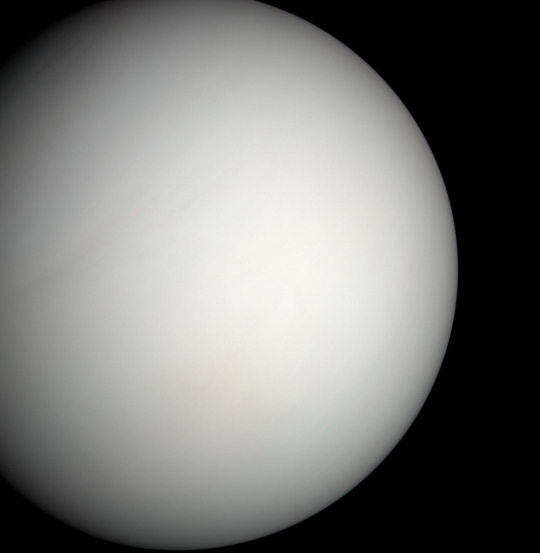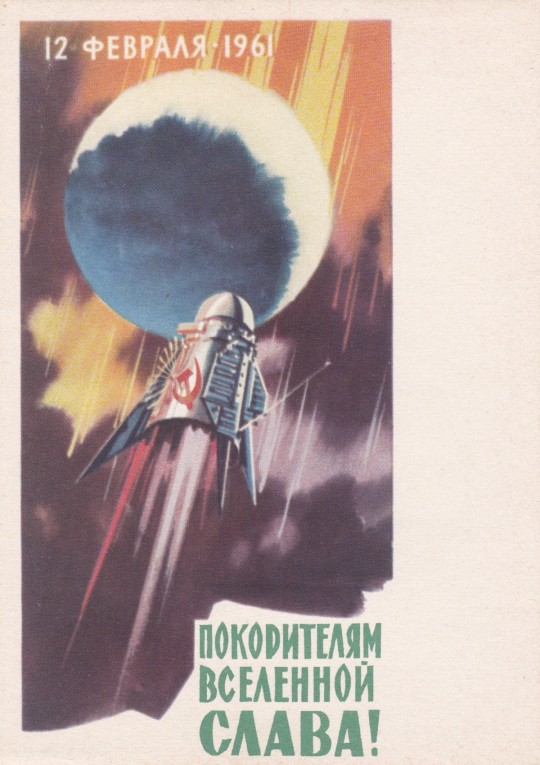#venera 9
Text

Look at my rough sketches look loo look look I wanna go to Venus gahhhhhh I want toooooo travel light years away
#kool shtuff☆#hyperfixation posting#hyperfixation#special interest#permian#heliocoprion#venera 9#venus#outer space#space
10 notes
·
View notes
Text

Venera 9 Lander: Surface of Venus (October 22, 1975)
#astronomy#krakenmare#solar system#astrophotography#outer space#venera 9#venus#planet venus#1975#1970s
28 notes
·
View notes
Text
Tired: "It's amazing that we get to live in a time where a probe has crashed on the moon"
Wired: We live in a time where there exist the corroded remains of a series of landers on Venus that despite the acid atmosphere persevered just long enough to send us images of a landscape that no human will ever visit.
12 notes
·
View notes
Text
Only 4 spacecraft have ever returned images from Venus’ surface. The world next door doesn’t make it easy, with searing heat and crushing pressure that quickly destroy any lander.
In 1975 and 1982, 4 of the Soviet Union’s Venera probes captured our only images of Venus’ surface. The Veneras, which mean “Venus” in Russian, scanned the surface back and forth to create panoramic images of their surroundings. They revealed yellow skies and cracked, desolate landscapes that were both alien and familiar—views of a world that may have once been like Earth before experiencing catastrophic climate change.
Ted Stryk, a philosophy professor at Roane State Community College in Oak Ridge, Tennessee, specializes in reconstructing images from early space missions. Using data from the Russian Academy of Sciences, he has over time reconstructed the best-possible versions of the original Venera panoramas.

VENUS SURFACE PANORAMA FROM VENERA 9 This 1975 panorama from the Soviet Union's Venera 9 probe includes the first images ever taken from the surface of another planet.Image: Russian Academy of Sciences / Ted Stryk

VENUS SURFACE PANORAMA FROM VENERA 10 The Soviet Union's Venera 10 probe captured this panorama of Venus's surface in 1975.Image: Russian Academy of Sciences / Ted Stryk

VENUS SURFACE PANORAMA FROM VENERA 13 FRONT CAMERA The Soviet Union's Venera 13 probe captured two color panoramas of Venus's surface in 1982. This panorama came from the front camera.Image: Russian Academy of Sciences / Ted Stryk

VENUS SURFACE PANORAMA FROM VENERA 13 REAR CAMERA The Soviet Union's Venera 13 probe captured two color panoramas of Venus's surface in 1982. This panorama came from the rear camera.Image: Russian Academy of Sciences / Ted Stryk

VENUS SURFACE PANORAMA FROM VENERA 14 FRONT CAMERA The Soviet Union's Venera 14 probe captured two color panoramas of Venus's surface in 1982. This panorama came from the front camera.Image: Russian Academy of Sciences / Ted Stryk

VENUS SURFACE PANORAMA FROM VENERA 14 REAR CAMERA The Soviet Union's Venera 14 probe captured two color panoramas of Venus's surface in 1982. This panorama came from the rear camera.Image: Russian Academy of Sciences / Ted Stryk
youtube
#Venus#Russian Academy of Sciences#Venera#Ted Stryk#Venera 14#Venera 13#Venera 9#Venera 10#space#astronomy#astrophotography#religion is a mental illness#Youtube
21 notes
·
View notes
Text
Un'ora (intensa) con Venera 9
Sono passati quarantotto anni ma quelle immagini rimangono di straordinario interesse. A colori poi, sono ancora più suggestive!
Sono passati esattamente 48 anni (e un giorno). Era infatti il ventidue ottobre del 1975, quando la sonda sovietica Venera 9 atterrava sulla caldissima superficie di mercurio e riusciva ad acquisire un panorama a 180 gradi (l’immagine in apertura di questo articolo). La sonda era progettata per resistere alle tremende condizioni di pressione e temperatura della superficie del pianeta: in effetti,…

View On WordPress
0 notes
Text



late night simlish lessons...
#ts4 gp#ts4 gameplay#ts4#gp: faust munch fam#the way milo IMMEDIATELY got an attraction moodlet when i added her to the household lmfao#venera reciprocated pretty quickly as well lol#but then every time ven tries to flirt w/ him bc of the language barrier she 9/10 gets an embarrassed moodlet lmao#plus she has the cringe trait bc she has an earnest zest for life & an interest in human culture#beyond...biology...#milo munch#venera cassini#gp: munch spawn
3 notes
·
View notes
Text

Model of the Set of Venera landers (Venera-9 / Venera-10 and Venera-13 / Venera-14) space probe.
Link to see more about this model on Turbosquid.com:
https://www.turbosquid.com/3d-models/venera-landers-1865618?referral=amanitacz
Link to the whole gallery:
https://www.turbosquid.com/Search/Artists/AmanitaCZ?referral=amanitacz
Link to the software:
http://www.cazaba.cz/
#graphic#computer graphics#amanitacz#cazaba#3d#model#3d model#soviet#ussr#cccp#russian#space#probe#sond#lander#venus#venera#planet#science#exploration#mission#9#10#13#14#proton#rocket#rover#research#turbosquid
0 notes
Text
So Venus is my favorite planet in the solar system - everything about it is just so weird.

It has this extraordinarily dense atmosphere that by all accounts shouldn't exist - Venus is close enough to the sun (and therefore hot enough) that the atmosphere should have literally evaporated away, just like Mercury's. We think Earth manages to keep its atmosphere by virtue of our magnetic field, but Venus doesn't even have that going for it. While Venus is probably volcanically active, it definitely doesn't have an internal magnetic dynamo, so whatever form of volcanism it has going on is very different from ours. And, it spins backwards! For some reason!!
But, for as many mysteries as Venus has, the United States really hasn't spent much time investigating it. The Soviet Union, on the other hand, sent no less than 16 probes to Venus between 1961 and 1984 as part of the Venera program - most of them looked like this!

The Soviet Union had a very different approach to space than the United States. NASA missions are typically extremely risk averse, and the spacecraft we launch are generally very expensive one-offs that have only one chance to succeed or fail.
It's lead to some really amazing science, but to put it into perspective, the Mars Opportunity rover only had to survive on Mars for 90 days for the mission to be declared a complete success. That thing lasted 15 years. I love the Opportunity rover as much as any self-respecting NASA engineer, but how much extra time and money did we spend that we didn't technically "need" to for it to last 60x longer than required?
Anyway, all to say, the Soviet Union took a more incremental approach, where failures were far less devastating. The Venera 9 through 14 probes were designed to land on the surface of Venus, and survive long enough to take a picture with two cameras - not an easy task, but a fairly straightforward goal compared to NASA standards. They had…mixed results.
Venera 9 managed to take a picture with one camera, but the other one's lens cap didn't deploy.
Venera 10 also managed to take a picture with one camera, but again the other lens cap didn't deploy.
Venera 11 took no pictures - neither lens cap deployed this time.
Venera 12 also took no pictures - because again, neither lens cap deployed.
Lotta problems with lens caps.
For Venera 13 and 14, in addition to the cameras they sent a device to sample the Venusian "soil". Upon landing, the arm was supposed to swing down and analyze the surface it touched - it was a simple mechanism that couldn't be re-deployed or adjusted after the first go.
This time, both lens caps FINALLY ejected perfectly, and we were treated to these marvelous, eerie pictures of the Venus landscape:

However, when the Venera 14 soil sampler arm deployed, instead of sampling the Venus surface, it managed to swing down and land perfectly on….an ejected lens cap.
#space#space history#venus#NASA#Venera#spost#I will talk all day about venus#ask me about venus floating sky cities#unpopular opinion venus > mars#this is probably my favorite space history story#the surface of venus is made of lens caps#don't try to tell me the universe doesn't have a sense of humor#well#I guess its more that people have a sense of humor and we happen to live in the universe
28K notes
·
View notes
Text


Plaid wallpapers by Lady Venera
9 swatches
Custom thumbhail
SFS
@sssvitlanz
#ts4#the sims 4#ts4cc#s4cc#ts4mm#s4mm#ts4 buildcc#s4 buildcc#ts4 wallpaper#s4 wallpaper#my cc#ladyvenera#ladyvenera cc
26 notes
·
View notes
Text

Venus: Earth's Cloudy Twin - September 23rd, 1996.
"If Venus weren't so cloudy, it would be more similar to Earth. This picture by the Galileo spacecraft shows just how cloudy Venus is. Venus is very similar to Earth in size and mass - and so is sometimes referred to as Earth's sister planet - but Venus has a quite different climate. Venus' thick clouds and closeness to the Sun make it the hottest planet - much hotter than the Earth. Humans could not survive there, and no life of any sort has ever been found. When Venus is visible, it is usually the brightest object in the sky after the Sun and the Moon. More than 20 spacecraft have visited Venus, including Venera 9, which landed on the surface, and Magellan, which used radar to peer through the clouds and make a map of the surface. This visible light picture of Venus was taken by the Galileo spacecraft."
12 notes
·
View notes
Text
bi trans womans experience is having a night long coke fueled orgy with two dick girls named Melody and Venera and a gay bear real estate agent you found at a gay bar from 7 pm to 9 am, crash at 10, wake up at 4, doll yourself up and prepare for your 6 pm date with a cishet man named hunter who is a birthday party magician and doesnt know what a scat fetish is
7 notes
·
View notes
Photo

"February 12, 1961"
"Glory to conquerors of the universe!"
Vintage postcard commemorating the launch of Venera space station. Artist V. Viktorov (1962).
$9 + $5 shipping Sold
Message me to buy!
How to buy. Other items in my shop. I combine shipping if you buy more than one item
91 notes
·
View notes
Text
The WIP Masterpost (ever)
PT: The WIP Masterpost (ever). end PT.
This is a masterpost with links to all of my wip intros! Wanna know them? Just give a click!
(currently working on)
Ein
Totsuka & Jandir
Meine
(currently on the back shelf)
Trisaster
Snow White
Little Red Riding Hood Cyberpunk
The War Of The Human Throne
The Witch's Paladin
(Un)Chosen One
Across Time and Odds
The 9 Gates of Hell
Venera & Clou
Rumplestilstkin's Child
Elysium
Gate
RedRose
how they work:
each link redirects you to an introduction of each wip including synopsis, links to pinterest moodboards (in some) and the cast. each one of them also has a link section at the bottom, where you can find the tags i use for each wip so you can find when i'm rambling about them (lol), a link to back in here, a link to the oc master-intro-post and my writing masterlist. a lot of these also have whump in some measure, and some even have aus!
the information in them is merely a guide for you to know what i am talking about lots of the time, so i 1000% encourage you to ask me more about them! i also have some ask games/oc ask games saved you can take questions from if you want to ask but not to elaborate an ask yourself.
#The WIP Masterpost#my wips#writeblr#fantasy writing#wip intro#masterpost#masterlist tag#masterlists#whumpblr#whump community#writing community#whump writer#trans writers#black writers#brazilian writers#yup im tagging that too#i may or not include my mahou shoujo comic idea here too#oh yea and the pencil angels
5 notes
·
View notes
Text
Venera-9
Unstable entity
Eroded firmament
Sea of forgotten beauty
It never rains on venus
Red paint flakes off my sides
I saw and I stayed and waited
Waiting for your dreams in the stars
Dreaming of green fields near home
You said you'd come and see
Apple blossoms that would grow from this seed
Do you still look up and dare to hope?
Are the skies still blue above the earth?
#creative writing#writers#writer#writers on tumblr#writing#writeblr#writers and poets#writerscommunity#original writing#my writing#poems and poetry#my poem#original poem#poem#poetry#poets on tumblr#poetrycommunity
7 notes
·
View notes
Text

𝗟𝗮 𝗽𝗹𝗮𝗻𝗲̀𝘁𝗲 𝗩𝗲́𝗻𝘂𝘀.
𝖬𝖾𝗅𝖾𝗄 𝖤𝗅-𝖸𝖺𝗍𝖺𝗋 𝗇𝗈𝗎𝗌 𝗋𝖺𝖼𝗈𝗇𝗍𝖾 𝖺𝗅𝗈𝗋𝗌 𝗌𝗈𝗇 𝖾́𝗍𝗎𝖽𝖾 𝗌𝗎𝗋 𝗅𝖺 𝖯𝗅𝖺𝗇𝖾̀𝗍𝖾 𝖵𝖾́𝗇𝗎𝗌. 𝖤𝗅𝗅𝖾 𝖻𝗋𝗂𝗅𝗅𝖾 𝗍𝖾𝗅𝗅𝖾𝗆𝖾𝗇𝗍, 𝗊𝗎𝖾 𝗇𝗈𝗎𝗌 𝗅'𝖺𝗉𝗉𝖾𝗅𝗈𝗇𝗌, 𝖺̀ 𝗍𝗈𝗋𝗍, 𝗅'𝖤́𝗍𝗈𝗂𝗅𝖾 𝖽𝗎 𝖻𝖾𝗋𝗀𝖾𝗋.
L’infernale Vénus.
Sortez la crème solaire : il fait à la surface de Vénus +470°C.
Il fait chaud, non ?
Il faut dire que c’est la deuxième planète la plus proche du Soleil, à une distance de 108 millions de km. Mais s’il fait aussi chaud, c’est aussi parce que l’atmosphère de Vénus est composée à 96% de dioxyde de carbone (CO₂), à l’origine d’un puissant effet de serre. C’est-à-dire que ce gaz absorbe les rayonnements infrarouges et retient ainsi l’énergie solaire, ce qui augmente la température de la surface. Vénus est donc une planète inhospitalière. Pourtant, elle est souvent considérée comme la jumelle de la Terre. Toutes deux ont en effet une masse et une taille très semblables, et sont toutes les deux des planètes solides - on dit aussi telluriques, qui vient du mot « terre ». Mais ce sont bien les seuls points communs entre Vénus et la Terre.
Et à l’intérieur ?
A l’instar de toutes les planètes du Système solaire, Vénus tourne autour du Soleil, en plus de tourner sur elle-même. Elle met 224 jours terrestres pour faire sa révolution, contre 365 jours pour la Terre. En revanche, elle tourne sur elle-même très lentement, en 243 jours. Alors que notre Terre met, elle, 24 heures. De plus, Vénus tourne sur elle-même dans le sens inverse de toutes les autres planètes, on parle de rotation rétrograde. Sur Vénus, le Soleil se lève à l’ouest et se couche à l’est.
Vénus : 4 000 ans de connaissances.
Vénus est la première planète dont la trajectoire a été tracée, il y a 4 000 ans. On trouve des traces de Vénus dans des sources égyptiennes, grecques, babyloniennes ou encore mayas.
L’observation.
Le premier à l'observer avec un appareil scientifique est Galilée, l’inventeur de la lunette astronomique. Ce physicien italien du 17ᵉ siècle découvre que comme la Lune, Vénus a des phases : son éclairement est différent en fonction de sa position par rapport au Soleil. Cette observation vient confirmer l’hypothèse de l’astronome Copernic : les planètes ne tournent pas autour de la Terre, mais autour du Soleil. Ce modèle, que l’on appelle « héliocentrisme », était alors soutenu par peu de scientifiques, mais il s’est imposé petit à petit grâce aux observations astronomiques.
Percer les nuages de Vénus.
Pas facile d’observer la surface de Vénus au travers de son atmosphère nuageuse et opaque. Pas le choix, si on veut en savoir plus : il faut se rendre sur place. Au total, une vingtaine de sondes ont survolé, tourné autour, ou exploré Vénus. C’est la première planète vers laquelle des engins ont été envoyés, dès 1960. Son exploration s’est faite à tâtons, avec de belles réussites, mais aussi des échecs. La sonde américaine Mariner 2 a survolé pour la première fois Vénus en 1962. 13 ans plus tard, Venera 9, conçu par l’URSS, s’est posé à la surface de la planète infernale. A cause des conditions extrêmes, l’engin n’a survécu que 53 min, mais il a réussi à photographier la zone d’atterrissage.
D’ici quelques années, la NASA projette d’envoyer les sondes DaVinci et Veritas vers Vénus, pour étudier son atmosphère et la composition de sa surface. Ce serait les premières missions américaines vers Vénus depuis le projet Magellan en 1989.
2 notes
·
View notes